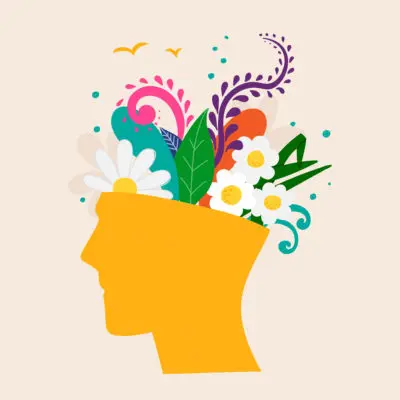Medical Editor: Dr. David Cox, PhD, ABPP
Ketamine is currently the only FDA-approved psychedelic, in the form of Spravato (esketamine), for treatment-resistant depression. It is also used off-label to treat PTSD, suicidal thoughts, and other medical conditions. Due to its immense potential for healing and psychedelic properties, psychedelic communities and doctors have embraced the drug. However, it is technically a dissociative anesthetic. It was discovered in 1956 and approved in 1970 as an anesthetic agent derived from phencyclidine.
Ketamine grew a name for itself in battlefield settings such as Vietnam where it was used extensively. It’s very safe for anesthesia and pain relief, especially compared to opiate options. It maintains hemodynamic stability, or stable blood flow, which is of utmost importance when treating trauma. Ketamine is still used in operating rooms today. It’s also a popular recreational drug for its hallucinogenic, dissociative, and euphoric effects.
One of the most popular and research-backed methods of intake for ketamine is IV infusion. These are done legally, but off-label, in ketamine clinics across the country. If someone is considering ketamine infusions, there is understandable curiosity regarding what they feel like and what to expect. Keep reading to learn how ketamine infusions work, what they feel like, and other crucial information to know before scheduling a session.
What Is A Ketamine Infusion?
Ketamine, or racemic ketamine, is what’s given as an infusion (which is also called intravenous or IV, ketamine) into the bloodstream under medical supervision. It is a mixture of two mirror-image molecules, “R” and “S” ketamine. The FDA-approved nasal spray, Spravato (esketamine) only contains the “S” molecule.
Although only nasal esketamine is FDA-approved, most of the research on ketamine for mental health has been conducted using the infusion method. Numerous studies support the use of ketamine infusions, in particular, for treatment-resistant depression, or patients who do not respond to typical antidepressants such as SSRIs. A 2017 review states that intravenous infusion of ketamine, administered one to three times per week, is a rapid and effective treatment for depression.
Patients typically receive an initial six infusions in a two-week period, with a check-in point after three sessions to see how it’s working. If the patient is responding well and completes the six-infusion course, they should feel the benefits in hours to days after an infusion. After the initial course, patients typically come back for boosters as needed, ranging from once a month, to once every two months.
What Does Getting A Ketamine Infusion Feel Like?
Prior to one’s initial ketamine infusion, any reputable clinic will have an intake session. During this time, the doctor and patient review medical history, current symptoms, and decide upon the best treatment plan going forward. As a 2017 study states, the ketamine infusion dosage for depression is administered in subanesthetic doses, usually at 0.5 mg/kg, although some patients may respond to doses as low as 0.1 mg/kg, and others may need up to 0.75 mg/kg. As one continues their ketamine treatment, the dose can be adjusted per the patient’s needs.
Infusions typically take place in ketamine clinics, doctor’s offices, or medical spas. A nurse will insert the IV into a vein, most often opting for one that allows the patient to remain comfortable. Depending on the dosage or patient’s request, the infusion can last from 45 minutes to an hour and a half. During that time, the patient is sitting or lying down in a cozy setting. There is an emergency button to press if needed. Often providers will encourage the patient to listen to uplifting music during the infusion. Some clinics prepare their own playlist, featuring calm ambient music or the voice of a guide to help steer the session in a positive light.
Because ketamine infusions are administered at subanesthetic doses, the patient is not unconscious for the infusion. However, they may find it difficult to stand or talk and may be most comfortable closing their eyes and allowing the experience to take over them. Closed-eye visuals, euphoria, and changes in time perception are common experiences. Overall, most patients find the effects of the infusion quite enjoyable. Feelings of empathy and compassion are common. One might let go of petty concerns and come out of a session with a healthier perspective.
While the infusion experience can be therapeutic, the real work happens in the hours afterward. While more research is needed on ketamine’s mechanism of action, so far evidence suggests that it works through the inhibition of biogenic amine uptake, binding to opioid receptors, and inhibition of N-methyl D-aspartate (NMDA) receptors. A 2018 study suggests that ketamine may diminish treatment-resistant depression by normalizing the interaction between the DMN (default mode network) and salience networks. It’s believed that ketamine can be effective in the treatment of depression, PTSD, and other mental health concerns on a structural level, by stimulating dendritic and synaptic growth restoration of connectivity.
What Else Should I Know?
Reactions to ketamine infusions vary, which is why it’s safest to start on a low dose. One can expect to feel out of it and dizzy after an infusion, and should not drive a car or do other activities that might pose a physical danger. For several hours after the infusion, it is best to clear that time to relax, have a loved one take care of you, or hang out and watch TV or listen to music.
Adverse reactions to ketamine infusions that have been reported include elevated heart rate and blood pressure. Before a ketamine infusion, a nurse or practitioner will check your blood pressure to ensure safety. Some experience nausea and vomiting, so one should ensure their ketamine infusions take place at a reputable clinic under medical supervision, and ideally have a trusted friend or loved one monitor them afterward. As noted by ketamine’s popularity as a recreational drug, there is some risk for dependence or abuse, further emphasizing the importance of using ketamine under a doctor’s supervision.
The emerging research on ketamine infusions suggests that this treatment could be a literal life-saver for patients with treatment-resistant depression. Overall, ketamine infusions appear to be tolerated well and can be an enjoyable experience. However, one should treat it seriously, as there are potential risks, and only take ketamine under the supervision of a doctor at a reputable clinic.









